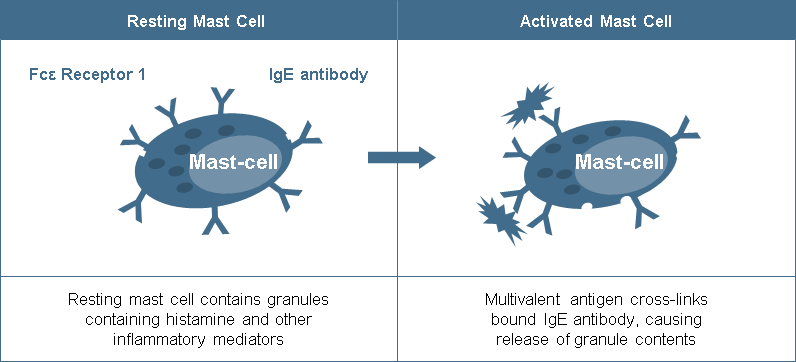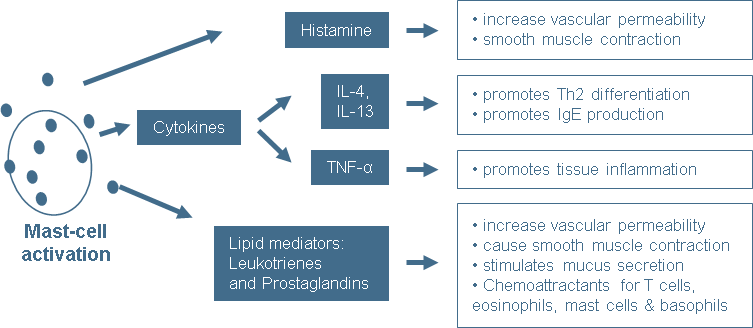BiteSized Immunology: Cells

Mast Cells
Mast cells are long-lived tissue-resident cells with an important role in many inflammatory settings including host defence to parasitic infection and in allergic reactions. Mast cells are located at the boundaries between tissues and the external environment, for example, at mucosal surfaces of the gut and lungs, in the skin and around blood vessels. Mast cells are key players in the inflammatory response as they can be activated to release a wide variety of inflammatory mediators, by many different antigens including allergens, pathogens and physiological mediators.


Mast cells derive from the bone marrow but unlike other white blood cells, mast cells are released into the blood as mast cell progenitors and do not fully mature until they are recruited into the tissue where they undergo their terminal differentiation. Stem cell factor (SCF) is a cytokine essential for mast cell development, proliferation and survival. Mast cells can be distinguished from other cell types in tissue sections by Toludine blue staining that stains mast cells blue.
© The copyright for this work resides with the author
